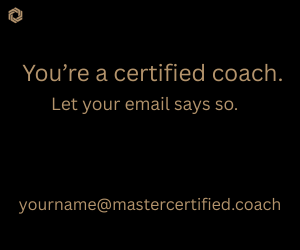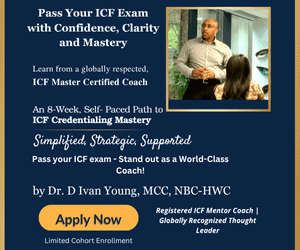In the art of coaching, few structures have been as celebrated — and as misunderstood — as the action plan. Positioned at the final stage of many sessions, this component is meant to bridge awareness and tangible transformation. Yet, it’s often reduced to a procedural formality — a checklist of commitments that lacks depth or true intentional design.
In conversations with colleagues, and through supervising processes, I’ve observed a recurring pattern: paradoxically, the moment to define actions often becomes the least creative part of the session. Despite having explored powerful territories, the action plan risks becoming generic, vague, or merely performative. What makes this happen? Could it be that the very notion of “action” needs to be expanded and enriched?
The Risk of Action as a Command
In dominant discourse, action is equated with doing, external movement, and observable results. While this perspective is valuable in contexts of productivity and task management, it becomes limiting when we work in more subtle domains of being: identity, emotionality, belief systems, relationships, or life purpose. In these domains, action is not always visible, immediate, or even linear — yet it can be profoundly transformative.
This is why in my practice and in the training processes I lead, I began to ask myself, “how can we design actions that honor both the tangible and the intangible, the external and the internal?” The answer emerged in the form of a map I want to share with this community: a model of three categories of action that allow us to refine, personalize, and deepen the design of each coaching process.
3 Coaching Strategy Categories
This model begins by recognizing that not all actions share the same nature or pursue the same goals. Categorizing them enables us to accompany the client with greater precision and to tailor the design to the true needs of the session. The categories are:
Actions Oriented Toward Specific Results
This is the most recognizable type of action: one that seeks a tangible or observable result, and generally short- or medium-term outcome. These are actions from the world of doing, achieving, and task execution.
Example: “Apply for a passport to be able to travel to an international training program” or “complete a legal procedure to open a business location.”
These actions require clarity around what, when, and how. They are ideal when the session has revealed a specific objective, a goal to achieve, or a postponed decision. They are measurable and, in many cases, constitute a necessary step to unlock greater processes.
Coach’s Recommendation: Value this type of action, but do not limit yourself to them. Explore with the client whether this result is supported by an empowering emotional state, a reinforcing identity, and a supportive relational network.
Actions for Developing Productive Habits
Here we enter the realm of meaningful repetition. These are actions that do not aim for a single result but for the installation of a beneficial behavior pattern over time. It’s not about achieving something but about becoming someone.
Example: “Practice 15 minutes of journaling each morning to organize thoughts and emotions.”
This type of action is especially useful when the client needs to sustain a process, cultivate a new way of being in the world, or strengthen an emerging competence. Its power lies in consistency and resonance.
Coach’s Recommendation: Help the client design a simple, achievable, and meaningful ritual. Validate their initial efforts as part of a learning process, not as a measure of success or failure. In this space, the symbolic holds as much weight as the practical.
Actions of Awareness and Inner Strategy
These actions are not measured by what is accomplished, but by what is understood and transformed internally. They are actions of observation, self-inquiry, and re-signification. In many cases, they are the most subtle — and the most powerful.
Example: “Observe my thoughts during a difficult meeting and note which part of me is reacting and what need it expresses.”
These actions require heightened presence, a reflective disposition, and often follow-up coaching to debrief and integrate the experience. They are not “doings” in the traditional sense, but they are essential for dismantling entrenched patterns, expanding awareness, and activating new relational strategies.
Coach’s Recommendation: Validate these actions as legitimate. Name them, frame them, and perhaps most importantly, invite the client to record their inner experience (resources) so that it can be revisited in future sessions.
What Coaching Gains When We Expand the Concept of Action
When we acknowledge these three categories, coaching becomes more flexible, more human, and more profound. We no longer ask clients to force an “action” that doesn’t resonate with their emotional or evolutionary state. Instead, we guide them to choose the type of movement that truly aligns with their life moment.
This doesn’t mean downplaying action. Quite the opposite. It means making it more precise, meaningful, and sustainable. A client who commits to an action of awareness — provided it is well-designed — is progressing just as much, if not more, than one who completes a concrete task without reflection.
In cultural contexts where doing is overvalued and being is neglected, this perspective can be, in itself, a transformative intervention.
Practical Proposal: Bring This Model into Your Sessions
I invite you, fellow coach, to take a moment in your next session to explore with your client the three coaching categories before closing with the action plan. Some helpful questions:
- What do you need most right now — moving toward a result, building a habit, or turning inward?
- What kind of action would be coherent with the depth of the process we’ve just experienced?
- What action would honor the transformation that began to emerge in this session?
As a professional practice, I also encourage you to record, over a week or a month, the types of actions you co-design with your clients. Do some types predominate? What does this reveal about your style? What new possibilities might open if you expand your repertoire?
Action as a Field of Meaning
Ultimately, inviting the client to design an action is not about asking them to do something. It’s about inviting them to craft a way of inhabiting their life with greater coherence, presence, and freedom. In this sense, every action is a declaration of identity—a way of saying: “This is who I am, this is what I choose, this is what matters to me.”
Expanding the notion of action is not merely a technical improvement. It is an ethical, aesthetic, and ontological evolution of our practice. It allows coaching to remain true to its essence: a space for creative possibility, authentic transformation, and human encounter in its highest form.
Disclaimer
The views and opinions expressed in guest posts featured on this blog are those of the author and do not necessarily reflect the opinions and views of the International Coach Federation (ICF). The publication of a guest post on the ICF Blog does not equate to an ICF endorsement or guarantee of the products or services provided by the author.
Additionally, for the purpose of full disclosure and as a disclaimer of liability, this content was possibly generated using the assistance of an AI program. Its contents, either in whole or in part, have been reviewed and revised by a human. Nevertheless, the reader/user is responsible for verifying the information presented and should not rely upon this article or post as providing any specific professional advice or counsel. Its contents are provided “as is,” and ICF makes no representations or warranties as to its accuracy or completeness and to the fullest extent permitted by applicable law specifically disclaims any and all liability for any damages or injuries resulting from use of or reliance thereupon.
Authors
Post Type
Blog
Audience Type
Experienced Coaches, New Coaches, Professional Coaches
Topic
Coach Educator Essentials, Discover - Your Coaching Career
Related Posts
Your Guide to Preparing for the ACC Exam
Much like a smartphone upgrade that introduces improvements for a smoother user…
How Coaching Is Driving Inclusion Around the Globe: Lessons from Local ICF Chapters
When a group of mothers in Kazakhstan, many of whom had never…
Belonging Beyond Numbers: How ICF Demographic Trends Are Shaping the Future of Coaching
What does it really mean to belong? For the International Coaching Federation…








